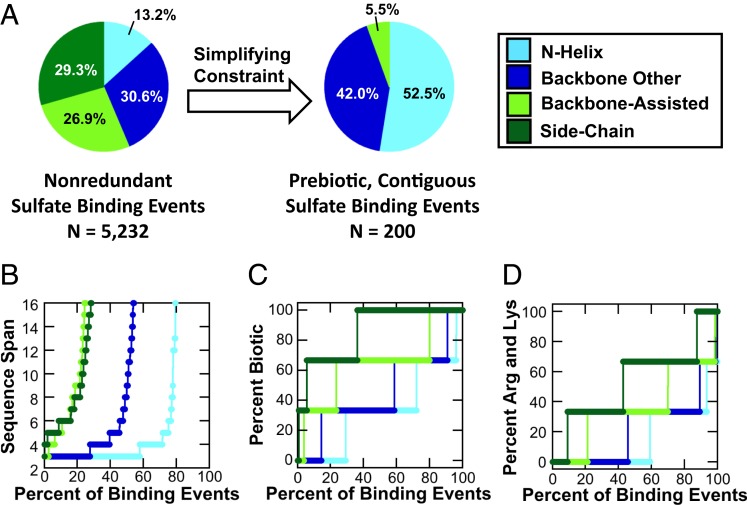Fig. 4.
Patterns of coincidental, promiscuous sulfate binding. Overall, 5,232 core, nonredundant sulfate binding events in which three residues belonging to the same chain bind the sulfate ion were detected in the PDB. (A) When all of these sulfate binding events are considered, the N-helix binding mode is the least common (consistent with emergences across all X-groups) (Fig. 3B). However, when only short, contiguous sequences with prebiotic amino acid composition are considered, the N-helix binding mode becomes the preferred solution. (B) A cumulative distribution of all sulfate binding events that interact with a single chain indicates that N-helix binding sites are realized with shorter sequence spans compared to any other binding mode: Nearly 60% of binding events are comprised of three consecutive residues (i.e., sequence span = 3; all sulfate binding events included). (C) N-helix binding sites are preferentially realized with prebiotic sequences when all single-chain sulfate binding events are considered. The prebiotic amino acids were taken to be Gly, Ala, Ser, Thr, Asp, Glu, Val, Leu, Ile, and Pro. (D) The basic amino acids Arg and Lys are near-essential for side-chain binding (present in ∼90% of all binding events) but not for N-helix binding (present in ∼40% of all binding events).

